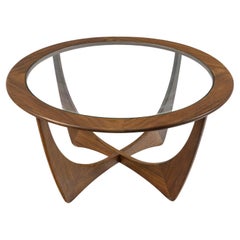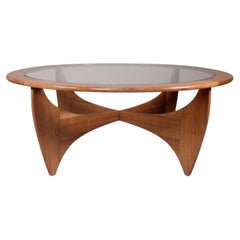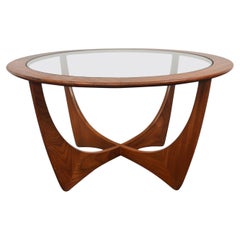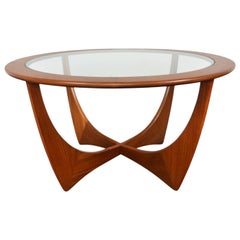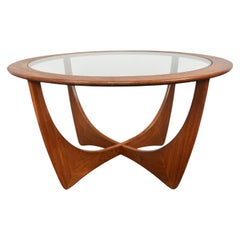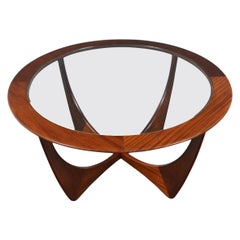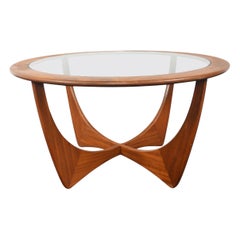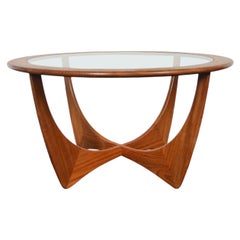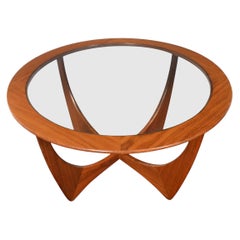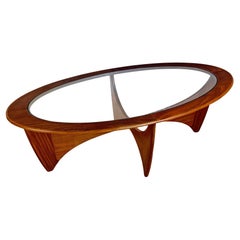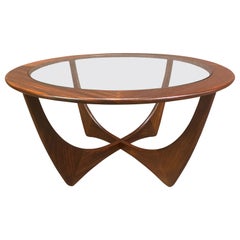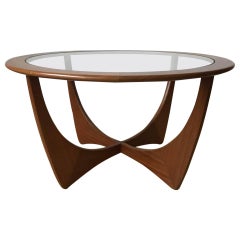Astro Coffee Table
Mid-20th Century French Mid-Century Modern Coffee and Cocktail Tables
Glass, Wood
Vintage 1960s Mid-Century Modern Coffee and Cocktail Tables
Glass, Wood
Mid-20th Century English Mid-Century Modern Coffee and Cocktail Tables
Glass, Teak
Mid-20th Century English Mid-Century Modern Coffee and Cocktail Tables
Glass, Teak
Mid-20th Century English Mid-Century Modern Coffee and Cocktail Tables
Glass, Teak
Mid-20th Century English Mid-Century Modern Coffee and Cocktail Tables
Glass, Teak
Mid-20th Century English Mid-Century Modern Coffee and Cocktail Tables
Glass, Teak
Mid-20th Century English Mid-Century Modern Coffee and Cocktail Tables
Glass, Teak
Mid-20th Century English Mid-Century Modern Coffee and Cocktail Tables
Glass, Teak
Vintage 1960s British Mid-Century Modern Coffee and Cocktail Tables
Glass, Teak
Vintage 1960s English Sofa Tables
Teak
Recent Sales
Vintage 1960s English Mid-Century Modern Coffee and Cocktail Tables
Teak
Vintage 1960s British Mid-Century Modern Coffee and Cocktail Tables
Glass, Teak
Vintage 1960s British Mid-Century Modern Coffee and Cocktail Tables
Smoked Glass, Teak
Vintage 1960s British Mid-Century Modern Coffee and Cocktail Tables
Glass, Teak
Vintage 1960s British Coffee and Cocktail Tables
Glass, Teak
Mid-20th Century English Mid-Century Modern Coffee and Cocktail Tables
Glass, Teak
Mid-20th Century British Mid-Century Modern Coffee and Cocktail Tables
Glass, Teak
Mid-20th Century English Mid-Century Modern Coffee and Cocktail Tables
Glass, Teak
Mid-20th Century English Mid-Century Modern Coffee and Cocktail Tables
Glass, Teak
Vintage 1960s English Mid-Century Modern Coffee and Cocktail Tables
Teak
20th Century English Mid-Century Modern Coffee and Cocktail Tables
Glass, Teak
Vintage 1960s French Scandinavian Modern Coffee and Cocktail Tables
Glass, Teak
Vintage 1960s British Mid-Century Modern Coffee and Cocktail Tables
Glass, Teak
Vintage 1960s European Scandinavian Modern Coffee and Cocktail Tables
Glass, Teak
Mid-20th Century English Mid-Century Modern Coffee and Cocktail Tables
Glass, Wood
Vintage 1960s British Mid-Century Modern Coffee and Cocktail Tables
Glass, Teak
Mid-20th Century English Mid-Century Modern Coffee and Cocktail Tables
Teak
Vintage 1960s English Mid-Century Modern Coffee and Cocktail Tables
Glass, Teak
Mid-20th Century British Mid-Century Modern Coffee and Cocktail Tables
Glass, Teak
20th Century Coffee and Cocktail Tables
Glass, Teak
Vintage 1960s English Mid-Century Modern Coffee and Cocktail Tables
Glass, Teak
Vintage 1960s British Mid-Century Modern Coffee and Cocktail Tables
Teak
Vintage 1960s British Mid-Century Modern Coffee and Cocktail Tables
Teak
20th Century English Mid-Century Modern Coffee and Cocktail Tables
Glass, Wood
Vintage 1960s English Mid-Century Modern Coffee and Cocktail Tables
Teak
Mid-20th Century English Mid-Century Modern Coffee and Cocktail Tables
Teak
20th Century English Mid-Century Modern Coffee and Cocktail Tables
Glass, Teak
Mid-20th Century American Coffee and Cocktail Tables
Teak
Vintage 1960s British Mid-Century Modern Coffee and Cocktail Tables
Glass, Teak
Mid-20th Century English Mid-Century Modern Coffee and Cocktail Tables
Teak
Vintage 1960s British Mid-Century Modern Coffee and Cocktail Tables
Teak
Vintage 1960s English Mid-Century Modern Coffee and Cocktail Tables
Teak
Vintage 1960s English Mid-Century Modern Coffee and Cocktail Tables
Teak
Vintage 1960s English Mid-Century Modern Coffee and Cocktail Tables
Teak
Vintage 1960s English Scandinavian Modern Coffee and Cocktail Tables
Teak
Mid-20th Century British Scandinavian Modern Coffee and Cocktail Tables
Glass, Teak
Vintage 1960s English Mid-Century Modern Coffee and Cocktail Tables
Glass, Teak
Vintage 1960s British Mid-Century Modern Coffee and Cocktail Tables
Teak, Glass
Mid-20th Century British Mid-Century Modern Coffee and Cocktail Tables
Teak
Vintage 1960s English Mid-Century Modern Coffee and Cocktail Tables
Teak
Vintage 1960s British Mid-Century Modern Coffee and Cocktail Tables
Glass, Teak
Vintage 1960s English Mid-Century Modern Coffee and Cocktail Tables
Teak
Mid-20th Century British Mid-Century Modern Coffee and Cocktail Tables
Teak
Mid-20th Century British Mid-Century Modern Coffee and Cocktail Tables
Glass, Teak
Vintage 1960s English Mid-Century Modern Nesting Tables and Stacking Tables
Teak
Mid-20th Century British Mid-Century Modern Dining Room Chairs
Fabric, Teak
Vintage 1960s English Scandinavian Modern Sideboards
Teak
Vintage 1960s English Mid-Century Modern Coffee and Cocktail Tables
Teak, Glass
Vintage 1960s English Mid-Century Modern Coffee and Cocktail Tables
Glass, Teak
Mid-20th Century Mid-Century Modern Coffee and Cocktail Tables
Teak
Vintage 1960s Danish Mid-Century Modern Coffee and Cocktail Tables
Glass, Teak
Vintage 1960s English Mid-Century Modern Nesting Tables and Stacking Tables
Teak
Vintage 1960s English Mid-Century Modern Nesting Tables and Stacking Tables
Teak
Vintage 1960s English Mid-Century Modern Coffee and Cocktail Tables
Teak
Mid-20th Century British Mid-Century Modern Coffee and Cocktail Tables
Glass, Teak
Vintage 1960s Great Britain (UK) Mid-Century Modern Coffee and Cocktail ...
Mid-20th Century British Mid-Century Modern Coffee and Cocktail Tables
Glass, Teak
People Also Browsed
2010s South African Minimalist Pedestals
Hardwood
21st Century and Contemporary Mexican Mid-Century Modern Table Lamps
Fiberglass, Linen, Fabric, Wood
21st Century and Contemporary Swedish Mid-Century Modern Table Lamps
Textile
2010s Italian Wardrobes and Armoires
Walnut
Vintage 1960s British Mid-Century Modern Coffee and Cocktail Tables
Glass, Teak
Vintage 1950s American Mid-Century Modern Coffee and Cocktail Tables
Mahogany, Cork
Astro Coffee Table For Sale on 1stDibs
How Much is a Astro Coffee Table?
A Close Look at Mid-century Modern Furniture
Organically shaped, clean-lined and elegantly simple are three terms that well describe vintage mid-century modern furniture. The style, which emerged primarily in the years following World War II, is characterized by pieces that were conceived and made in an energetic, optimistic spirit by creators who believed that good design was an essential part of good living.
ORIGINS OF MID-CENTURY MODERN FURNITURE DESIGN
- Emerged during the mid-20th century
- Informed by European modernism, Bauhaus, International style, Scandinavian modernism and Frank Lloyd Wright’s architecture
- A heyday of innovation in postwar America
- Experimentation with new ideas, new materials and new forms flourished in Scandinavia, Italy, the former Czechoslovakia and elsewhere in Europe
CHARACTERISTICS OF MID-CENTURY MODERN FURNITURE DESIGN
- Simplicity, organic forms, clean lines
- A blend of neutral and bold Pop art colors
- Use of natural and man-made materials — alluring woods such as teak, rosewood and oak; steel, fiberglass and molded plywood
- Light-filled spaces with colorful upholstery
- Glass walls and an emphasis on the outdoors
- Promotion of functionality
MID-CENTURY MODERN FURNITURE DESIGNERS TO KNOW
- Charles and Ray Eames
- Eero Saarinen
- Milo Baughman
- Florence Knoll
- Harry Bertoia
- Isamu Noguchi
- George Nelson
- Danish modernists Hans Wegner and Arne Jacobsen, whose emphasis on natural materials and craftsmanship influenced American designers and vice versa
ICONIC MID-CENTURY MODERN FURNITURE DESIGNS
- Eames lounge chair
- Nelson daybed
- Florence Knoll sofa
- Egg chair
- Womb chair
- Noguchi coffee table
- Barcelona chair
VINTAGE MID-CENTURY MODERN FURNITURE ON 1STDIBS
The mid-century modern era saw leagues of postwar American architects and designers animated by new ideas and new technology. The lean, functionalist International-style architecture of Le Corbusier and Bauhaus eminences Ludwig Mies van der Rohe and Walter Gropius had been promoted in the United States during the 1930s by Philip Johnson and others. New building techniques, such as “post-and-beam” construction, allowed the International-style schemes to be realized on a small scale in open-plan houses with long walls of glass.
Materials developed for wartime use became available for domestic goods and were incorporated into mid-century modern furniture designs. Charles and Ray Eames and Eero Saarinen, who had experimented extensively with molded plywood, eagerly embraced fiberglass for pieces such as the La Chaise and the Womb chair, respectively.
Architect, writer and designer George Nelson created with his team shades for the Bubble lamp using a new translucent polymer skin and, as design director at Herman Miller, recruited the Eameses, Alexander Girard and others for projects at the legendary Michigan furniture manufacturer.
Harry Bertoia and Isamu Noguchi devised chairs and tables built of wire mesh and wire struts. Materials were repurposed too: The Danish-born designer Jens Risom created a line of chairs using surplus parachute straps for webbed seats and backrests.
The Risom lounge chair was among the first pieces of furniture commissioned and produced by celebrated manufacturer Knoll, a chief influencer in the rise of modern design in the United States, thanks to the work of Florence Knoll, the pioneering architect and designer who made the firm a leader in its field. The seating that Knoll created for office spaces — as well as pieces designed by Florence initially for commercial clients — soon became desirable for the home.
As the demand for casual, uncluttered furnishings grew, more mid-century furniture designers caught the spirit.
Classically oriented creators such as Edward Wormley, house designer for Dunbar Inc., offered such pieces as the sinuous Listen to Me chaise; the British expatriate T.H. Robsjohn-Gibbings switched gears, creating items such as the tiered, biomorphic Mesa table. There were Young Turks such as Paul McCobb, who designed holistic groups of sleek, blond wood furniture, and Milo Baughman, who espoused a West Coast aesthetic in minimalist teak dining tables and lushly upholstered chairs and sofas with angular steel frames.
Generations turn over, and mid-century modern remains arguably the most popular style going. As the collection of vintage mid-century modern chairs, dressers, coffee tables and other furniture for the living room, dining room, bedroom and elsewhere on 1stDibs demonstrates, this period saw one of the most delightful and dramatic flowerings of creativity in design history.
Finding the Right Coffee-tables-cocktail-tables for You
As a practical focal point in your living area, antique and vintage coffee tables and cocktail tables are an invaluable addition to any interior.
Low tables that were initially used as tea tables or coffee tables have been around since at least the mid- to late-1800s. Early coffee tables surfaced in Victorian-era England, likely influenced by the use of tea tables in Japanese tea gardens. In the United States, furniture makers worked to introduce low, long tables into their offerings as the popularity of coffee and “coffee breaks” took hold during the late 19th century and early 20th century.
It didn’t take long for coffee tables and cocktail tables to become a design staple and for consumers to recognize their role in entertaining no matter what beverages were being served. Originally, these tables were as simple as they are practical — as high as your sofa and made primarily of wood. In recent years, however, metal, glass and plastics have become popular in coffee tables and cocktail tables, and design hasn’t been restricted to the conventional low profile, either.
Visionary craftspeople such as Paul Evans introduced bold, geometric designs that challenge the traditional idea of what a coffee table can be. The elongated rectangles and wide boxy forms of Evans’s desirable Cityscape coffee table, for example, will meet your needs but undoubtedly prove imposing in your living space.
If you’re shopping for an older coffee table to bring into your home — be it an antique Georgian-style coffee table made of mahogany or walnut with decorative inlays or a classic square mid-century modern piece comprised of rosewood designed by the likes of Ettore Sottsass — there are a few things you should keep in mind.
Both the table itself and what you put on it should align with the overall design of the room, not just by what you think looks fashionable in isolation. According to interior designer Tamara Eaton, the material of your vintage coffee table is something you need to consider. “With a glass coffee table, you also have to think about the surface underneath, like the rug or floor,” she says. “With wood and stone tables, you think about what’s on top.”
Find the perfect centerpiece for any room, no matter what your personal furniture style on 1stDibs — shop Art Deco coffee tables, travertine coffee tables and other antique and vintage coffee tables and cocktail tables today.
- Why is it called a coffee table?1 Answer1stDibs ExpertAugust 15, 2019
Coffee tables were originally used in living spaces during social gatherings to support a tray containing multiple mugs, a coffee pot, creamers and sugar bowls. Low to the ground and centrally located in the space, coffee tables reduced the host or hostess’s need to constantly stand and serve her guests.
- Can a coffee table be too low?1 Answer1stDibs ExpertAugust 8, 2024Yes, a coffee table can be too low. Most experts recommend choosing a coffee table that is around one to two inches lower than the seat height of your sofa or loveseat. You may find it difficult to access items on the tabletop while seated if you choose a shorter table. In addition, an overly low coffee table can make a room feel cramped or unbalanced. However, there are exceptions to this rule. Sometimes, designers intentionally place ultra-low coffee tables in spaces to create a bold contrast in a large room. Feel free to break from convention when choosing a coffee table. What's most important is that the finished result appeals to you and allows you to enjoy your seating area to the fullest. Shop a wide range of antique, vintage and contemporary coffee tables on 1stDibs.
- 1stDibs ExpertSeptember 25, 2019
A coffee table should generally be two-thirds as long as the sofa it stands in front of and around the same height as the sofa’s seat cushions.
- Is an ottoman a coffee table?1 Answer1stDibs ExpertApril 5, 2022Typically, an ottoman is not a coffee table. An ottoman is a small cushioned seat without a back or arm rests. You can shop a collection of vintage and contemporary ottomans from some of the world’s top sellers on 1stDibs.
- Who invented the coffee table?1 Answer1stDibs ExpertApril 12, 2024No one knows for sure who invented the coffee table. The earliest examples of the occasional table can be traced back to Victorian-era Britain. At that time, makers like William Watt and Collinson and Lock were producing coffee tables in large quantities.
Notably, F. Stuart Foote, the designer behind the American Imperial Furniture Company, claimed to have invented the coffee table in the early 20th century. He stated that he did so by cutting down the legs of a dining table. However, it's unlikely that Foote is the actual inventor of the coffee table, as books describing coffee tables existed in the UK a decade before his birth in 1872.
Shop a wide variety of coffee tables on 1stDibs. - 1stDibs ExpertApril 5, 2022While both pieces are relatively new to the furniture world, the main difference between them are their shapes. A cocktail table is generally square or rectangular in shape, while a coffee table tends to be oval or circular in shape. You can shop a collection of furniture from some of the world’s top sellers on 1stDibs.
- 1stDibs ExpertMay 22, 2019
The difference between a sofa table and a coffee table is that a sofa table is always behind the sofa and a coffee table is in front of it. Additionally, a sofa table is the same height as the sofa and a coffee table is much shorter.
- 1stDibs ExpertOctober 7, 2024The difference between a side table and a coffee table is mainly in the size and shape. Coffee tables usually feature larger tops but shorter legs. People typically place them in front of a sofa or a loveseat to rest books, drinks, remote controls and other items. Side tables also store items, but they are usually positioned beside an accent chair or at the ends of a sofa or loveseat. Shop a diverse assortment of side tables and coffee tables on 1stDibs.
- 1stDibs ExpertOctober 7, 2024The difference between a coffee table and a console table is in the design. A coffee table is a low table that comes in many shapes, such as surfaces that are rectangles, squares, ovals or circles. Console tables are taller and usually have elongated shapes, such as ovals, rectangles or semicircles. Placement is another differentiator between the two types of tables. Coffee tables usually go in front of sofas and loveseats, while console tables may be placed behind a sofa or loveseat or along a wall. Find a large collection of coffee tables and console tables on 1stDibs.
- 1stDibs ExpertApril 5, 2024Yes, end tables are generally taller than coffee tables.
The term “end table” is frequently used interchangeably with “coffee table,” and while these two furnishings have much in common, each table type offers its own distinctive benefits in your space.
Your end table is likely going to stand as tall as the arms of your sofa, and its depth will match the seating. These attributes allow for tucking the table neatly at the end of your sofa in order to provide an elevated surface between your seating and the wall. End tables are accent pieces — they’re a close cousin to side tables, but side tables, not unlike the show-stealing low-profile coffee table, are intended to be positioned prominently and have more to do with the flow and design of a room than an end table, which does a great job but does it out of the way of everything else.
Find all kinds of antique and vintage tables on 1stDibs. - 1stDibs ExpertAugust 26, 2024The difference between a center table and a coffee table is usually size. Center tables tend to be larger-sized accent tables placed in the center of seating areas. On the other hand, coffee tables are smaller tables usually positioned in front of sofas and loveseats. On 1stDibs, find a variety of center tables and coffee tables.
- 1stDibs ExpertMay 5, 2023To style an oval coffee table, create balance with opposites. Choose a sofa and accent chairs with a boxier shape for a striking contrast. Place a rectangular tray in the center and use it to display decorative accents or to store remotes and coasters. Another approach to decorating an oval table is to use decorative accents at different heights. Think of a tall vase placed next to a low bowl and a small sculpture positioned on top of two stacked coffee table books. On 1stDibs, shop an assortment of oval coffee tables.
- 1stDibs ExpertApril 5, 2022Styling a Noguchi coffee table really depends on the space you’re placing it in. The possibilities are far-reaching, so consider the colors and coordination of the other furniture and fixtures around the table. Noguchi tables look beautiful on their own or styled with flowers, books or pottery. Shop a selection of Isamu Noguchi pieces on 1stDibs.
- 1stDibs ExpertSeptember 25, 2019
On 1stdibs, a coffee table costs between $160 and $495,500.
- 1stDibs ExpertAugust 8, 2024Coffee tables became popular in the 1920s and ’30s. Pieces from this time period often show off the characteristics of Art Deco design, such as metal accents, mirrored finishes and the use of exotic woods like mahogany, ebony and zebra wood. Coffee tables first came into use during the Victorian era, largely in response to the rise of coffee houses in London. On 1stDibs, shop a wide range of antique, vintage and contemporary coffee tables.
- 1stDibs ExpertMay 30, 2024There isn't really a standard size of a coffee table. Manufacturers produce coffee tables in a range of sizes and shapes. However, many rectangular tables are around 45 to 48 inches in length by 25 to 28 inches in width. Heights typically range from 16 to 18 inches. Shop a wide variety of coffee tables on 1stDibs.
- What is a tray top coffee table?1 Answer1stDibs ExpertOctober 26, 2021Tray top coffee tables are coffee tables with long, flat rectangular surfaces that are supported by an x-frame base. Low tables that were initially used as tea or coffee tables have been around since at least the mid- to late-1800s. After coffee drinking and “coffee breaks” became popular, it didn’t take long for coffee and cocktail tables to become a design staple and for consumers to recognize their role in entertaining no matter what beverages were being served. Shop a collection of antique, vintage, and contemporary tray top coffee tables from some of the world’s top dealers on 1stDibs.
- 1stDibs ExpertOctober 26, 2021A tall coffee table is usually called exactly that — a tall coffee table. Coffee tables, also referred to as cocktail tables, are generally designed to sit at or below the sofa's seat height. These tables may come in a range of sizes, but they are often between 16 and 18 inches high and are designed in a variety of lengths and widths. They’re meant to provide a practical table-top surface that complements your living room layout. (A tall version might also be suitable for use as a dining table.) Shop a collection of antique, vintage and contemporary tall coffee tables from some of the world’s top dealers on 1stDibs.
- 1stDibs ExpertApril 5, 2024The average height of a coffee table is around 16 to 18 inches. Designers typically choose this height to create a balance between coffee tables and sofas. The average seat height of sofas is 17 to 18 inches, and experts typically recommend that coffee tables be no more than 1 inch shorter than sofa-seat height. Explore a diverse assortment of coffee tables on 1stDibs.
- Are glass coffee tables durable?1 Answer1stDibs ExpertJune 15, 2023Whether glass coffee tables are durable depends on the craftsmanship and the materials. Generally, tables with tempered glass are less likely to shatter and break. How well you care for a coffee table will also impact its life span. On 1stDibs, shop a collection of glass coffee tables.
Read More
The Ultimate Guide to Types of Tables for the Home
Whether you’re just moving in or ready to give your home a makeover, our guide will give you pointers on tables that are fitting for every room, nook and hallway.
May’s Most Popular Interiors on Instagram
Our feed is filled with the world's most beautiful spaces. See the rooms our followers have deemed the best of the best this month.
New Orleans’ Lee Ledbetter Makes Design Magic by Mixing Past and Present
The Louisiana-born and -bred architect talks to 1stdibs about the art of making timeless places that matter.
Desert Modern Designer Arthur Elrod Finally Gets His Day in the Sun
The Palm Springs interior decorator developed a mid-century style that defined the vacation homes of celebrities and other notables, including Bob Hope and Lucille Ball.
Remembering Design Visionary Florence Knoll Bassett (1917-2019)
A loving look back at the life and career of a doyenne of mid-century-modern style, who died last week at the age of 101.
From the Hamptons to Palm Springs, FormArch’s Homes Embody Both Comfort and Cool
The houses from this New York studio cloak modernist tendencies within what are often more traditional trappings.
